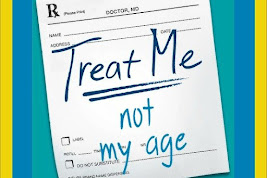Top Five Implicit Biases in Nursing and Healthcare
Implicit biases are unconscious attitudes or stereotypes that affect our perceptions, actions, and decisions. In the healthcare industry, implicit biases can seriously affect patient care and outcomes. Here are the top five implicit biases in nursing and healthcare and what we can do to recognize and address them.
1. Racial Bias
Racial bias is one of the most common implicit biases in healthcare. Studies have shown that healthcare providers tend to provide different levels of care to patients based on race or ethnicity. For example, Black patients are less likely to receive pain medication than White patients with the same condition.
To recognize and address racial bias, healthcare providers should undergo cultural competency training and learn about the impact of systemic racism on healthcare outcomes. They should also actively listen to their patients and their concerns, regardless of race or ethnicity.
2. Gender Bias
Gender bias is another common type of implicit bias in healthcare. Women are often dismissed or not taken seriously when they report symptoms, leading to delayed diagnoses and treatment. This is especially true for women of color and those in the LGBTQ+ community.
To recognize and address gender bias, healthcare providers should be aware of the unique health needs of women and the impact of gender on healthcare outcomes. They should also create a safe and inclusive environment where all patients feel comfortable discussing their health concerns.
3. Age Bias
Age bias is the tendency to treat patients differently based on their age. This can lead to undertreatment or overtreatment of certain conditions. For example, older patients may be undertreated for depression because their symptoms are dismissed as a normal part of aging.
To recognize and address age bias, healthcare providers should be aware of the unique health needs of different age groups and the impact of age on healthcare outcomes. They should also involve patients in their care and treatment decisions, regardless of age.
4. Weight Bias
Weight bias is the tendency to treat patients differently based on their weight or body size. This can lead to stigma, discrimination, and poor healthcare outcomes. For example, patients with obesity may be undertreated for certain conditions because their symptoms are attributed to their weight.
To recognize and address weight bias, healthcare providers should be aware of the impact of weight stigma on healthcare outcomes and the importance of treating all patients with respect and dignity, regardless of their weight or body size. They should also focus on health behaviors and outcomes rather than weight when assessing and treating patients.
5. Disability Bias
Disability bias is the tendency to treat patients differently based on their disability status. This can lead to inadequate care and poor healthcare outcomes. For example, patients with disabilities may be undertreated for certain conditions because their symptoms are dismissed as a normal part of their disability.
To recognize and address disability bias, healthcare providers should be aware of the unique health needs of patients with disabilities and the impact of ableism on healthcare outcomes. They should also involve patients with disabilities in their own care and treatment decisions and provide accessible healthcare services.
In conclusion, recognizing and addressing implicit biases in nursing and healthcare is essential for providing equitable and high-quality care to all patients. Healthcare providers should undergo cultural competency training, create a safe and inclusive environment, involve patients in their care, and focus on health behaviors and outcomes rather than stereotypes or biases. Doing so can improve healthcare outcomes and promote health equity for all.
RESOURCES
The Institute for Healthcare Improvement provides a blog post on how to reduce implicit bias in healthcare. [1]
The American Academy of Family Physicians has an article on how to identify, understand, and unlearn implicit bias in patient care. [2]
The New England Journal of Medicine published an article on tackling implicit bias in healthcare. [3]
Sigma Nursing has an article on identifying and confronting implicit bias in nursing. [4]
The Mayo Clinic News Network has an article on targeting unconscious bias in healthcare. [5]






.jpeg)